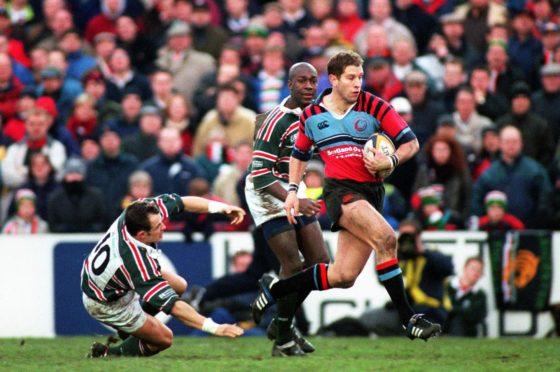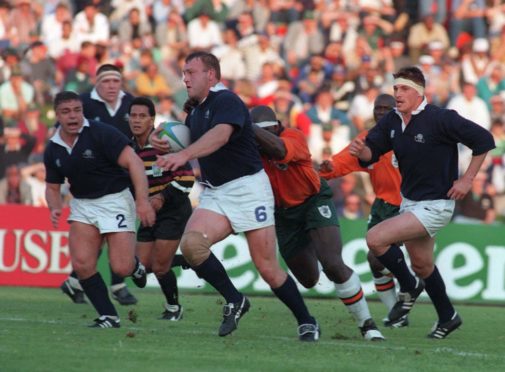The date for Scottish Rugby’s Annual General Meeting has still to be confirmed, but the motions for debate appear to be coming in thick and fast.
The AGM – probably held sometime in August – is the annual opportunity for clubs to put the wind up Mark Dodson and the executive in their ivory tower at Murrayfield. To remind them, not always politely, that the Union is a servant to its member clubs.
So we have this intricate little dance where clubs table “awkward” motions, some of which carry the day at the AGM, some which wither and die through lack of support. The clubs are an extremely broad church that reads from many different prayer books, after all.
Those motions that carry the day are frequently amended to within an inch of their existence. The executive then either blithely ignore them or interpret them in the manner they prefer. Nothing much changes until the next AGM when the whole little dance starts all over again.
A ‘modernised’ Inter-District Championship
Among the motions for this year’s AGM, from the Glasgow Hawks and GHA clubs, backed by Falkirk and Hawick, is quite direct. It asks the Union to scrap the Super6 semi-pro league established by the executive as a stepping stone from the amateur to pro game.
The motion directs all the considerable investment outlay into Super6 is to be re-directed into a “modernised” version of the old Inter-District Championship. We’ll go back to Edinburgh, Glasgow, the South, Caledonia and the Exiles. This will serve as the necessary stepping-stone from club to full representative rugby, as it did from the 1950s to the early 2000s.
For those of us who remember the old District Championship, this idea has appeal. Some warmly recall covering the old North and Midlands that eventually became the Caledonia Reds, in freezing places like Beveridge Park, Kirkcaldy, or Rubislaw in Aberdeen.
I remember a certain unprofessional pride when Caley won the 1997-98 Inter-District title, their first ever outright, beating Glasgow 20-14 in the final game at Murrayfield.
Eligibility for districts was always a confusing old thing – in that game Craig Sangster, Bruce Robertson and Malcolm Norval played for Glasgow (captained by Gordon Bulloch). Their Stirling County clubmates Mark and Kevin McKenzie and Gareth Flockhart, on the other hand, played for Caley.
Also in the Caley team that day were British Lions Rob Wainwright and Tom Smith, Scotland caps McKenzie, Shaun Longstaff (who scored two tries), Stewart Campbell, Stuart Grimes and the toughest man this side of David Leslie, Dave McIvor. The late, great Danny Herrington was at tight-head. Not shabby.
Fond memories of the Caley Reds
That team effectively became the Caledonia Reds as Scotland initially tried to go with four semi-pro teams based on the districts to play in the (then) new Heineken Cup.
Caley were decently competitive in the European arena. They gave eventual winners Brive an almighty scare before going down 32-30 at McDiarmid Park in their first year. In their second, they beat Treviso and Pau at McDiarmid.
This period is recalled with great nostalgia by all involved. Unfortunately, like most nostalgia, it’s more than a little obscured by the sepia tint.
I can’t think how many times I’ve heard someone say “Caley got great crowds at McDiarmid”. I think the biggest they got was actually just 3000 for that Pau game. That was still the biggest crowd any of the four teams got in Europe.
The Pau game was the final one Caley played before then SRU chief Duncan Paterson merged them with Glasgow and set us on two-pro team direction we still have today.
I then believed that four teams was the template that would eventually work to raise standards in Scottish rugby. Others fervently believed that empowering clubs to go professional was the only course. Just a few thought two pro teams was the way to go.
A debate that consumed Scottish rugby for a decade
This clubs-districts-pro teams debate consumed Scottish rugby circles for ten-odd years. There’s a few true believers left, still insisting we took the wrong course, like Japanese soldiers who never surrendered.
But the vast majority of the Scottish rugby world has long since moved on.
Hawks, as I recall, were among the most strident of the club camp. It’s nice they’ve joined us districts-minded brethern. But 20 years on, neither of our old arguments really stand up anymore.
Who knows whether clubs or districts would have worked? All we know for certain is that the pro teams have become relatively successful.
It took a long time, sure. But there is a complete absence of evidence that the other ways would have worked any better, unless you are convinced by assumptions.
And in that respect it’s probably why this motion to restore the inter-district championship doesn’t have my support.
It’s going back to a world that didn’t really exist 20 years ago. There were no “big” crowds and the bigger clubs treated district rugby like an inconvenience.
The only ones who were really enthusiastic about it were the players – sometimes I thought Wainwright liked playing for Caley more than he did for Scotland – and the writers like me.
Super6 might not be right, but we have no idea as yet
Don’t take this is a wholehearted endorsement of SRU executive policy and particularly Super6. But the fledgling semi-pro competition has had absolutely no time to bed down because of the pandemic.
Scrapping it now seems a little daft. The flow of young talent into the pro teams seems to be fairly robust right now, despite Covid. We can’t make an immediate decision on whether Super6 works, or are time-crunched to decide what might eventually be a better idea.
My preference, actually, is to empower more clubs than just six. We should really be looking seriously at a semi-pro Super10, at least. So in 20 years I’ve changed tact just like Hawks have.
That sometimes can happen over two decades. It’s best to look forward, not back.

